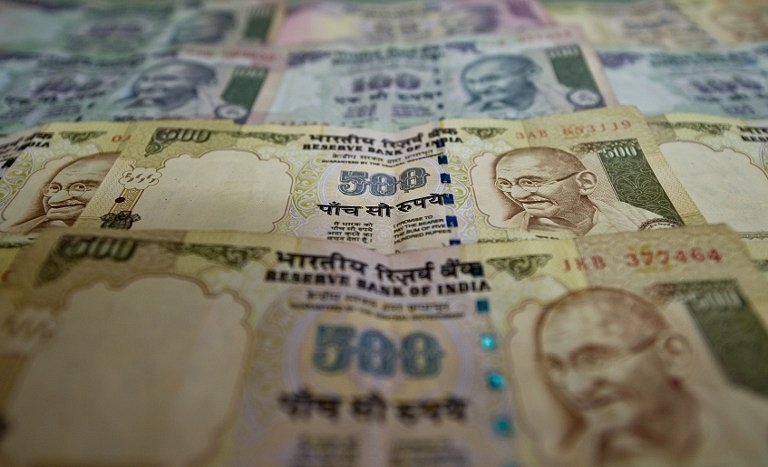Business
For Just Rs 1,000 Cr, You Can Buy A PSU Bank; The Taxpayers Jewels Are Now Charcoal

Under no circumstances should government think of keeping most banks in the public sector over the long term.
The public sector bank saga is increasingly looking like a horror story. On 9 February, four nationalised banks reported vertical drops in bottomline performance, with three of them (Dena Bank, Central Bank, and Allahabad Bank) reporting huge losses, and another (Punjab National Bank) escaping the blushes by a whisker. PNB saw profits plunge in the December quarter by 93 percent to just Rs 51 crore
Between them, these four banks had gross bad loans (non-performing assets, or NPAs) worth nearly Rs 70,000 crore, and the three in the red reported losses of nearly Rs 2,000 crore between them in just this quarter.
Public sector banks are a proxy for Indian economic activity, and if these results are any guide, the health of the economy is far from robust. Green shoots of revival may be visible here and there, but they are unlikely to sprout if they are watered only with red ink.
While the upsurge in bad loans and losses this quarter is partially the result of the Reserve Bank of India’s directive to banks to stop hiding their bad loans and stressed assets, the evidence so far also indicates that the rot is deep. Last month, ICICI Bank, the biggest private bank, reported a huge rise in bad loans of Rs 5,291 crore, and gross bad loans soared to Rs 21,149 crore.
If a comparatively better-run bank has so many rotten apples in its basket, one can imagine the story in the public sector. The worst may not be over, for many more banks will have to hang their soiled linen out for public viewing in the next few days.
To understand the real depth of the problem, consider how badly beaten these banks’ stocks are. At current downbeat valuations, you can buy 100 percent of Dena Bank for less than Rs 2,000 crore, and Allahabad Bank for Rs 2,750 crore. To control these banks, anyone with Rs 1,000-2,000 crore can buy them off.
Punjab National, the country’s second largest, is worth just Rs 16,000-and-odd crore – barely $2.5 billion. The public sector banking industry’s crown jewels have turned to charcoal. Most are being valued by the markets at less than half their book values, with Dena and Allahabad quoting at just a quarter of book value.
It is in this context that the government’s belated move to revive the Vajpayee era Disinvestment Commission is good news, but it has come too late for the banking sector.
The Times of Indiaquotes Jayant Sinha, Minister of State for Finance, as saying that the government will now push strategic sales, and one proposal is to offload 20-26 percent of IDBI Bank through a qualified institutional placement (QIP). He said:
We have been considering what is the right way for the transformation to go forward, and therefore, as part of that we have undertaken this QIP somewhere between 20-26 percent. So depending on how much of the QIP they (investors) decide to subscribe to we are open to giving them a board seat. Once they have a board seat, then they become capable of being part of the overall governance of the company.
The problem is trying to do a 26 percent QIP with IDBI Bank (currently valued at Rs 10,000-and-odd crore) is pointless. Raising Rs 2,500-3,000 crore from private investors at throwaway price is hardly worthwhile. It would be far simpler for the government itself to put in this kind of money, and disinvest later at a fat profit.
What Sinha is probably hinting at is that at some stage the new investors could be given a role in running the bank, once all legislative roadblocks are removed.This is too cautious a strategy to bear dividends in time for this government. Given the complete mess in which we find public sector banks in, recapitalising them with private funds at current prices is not a great idea.
This is, therefore, a time to think more innovatively. It may be far better for the government to invest in these banks at current low valuations and sell them later, once the balance-sheet has been fixed. If you cannot privatise right now due to legislative blocks, the next best thing is to invite private sector bankers to run the show and pay them with sweat equity.
They could take two to three years to turn these banks around, which would also give time for legislation to be put in place for denationalisation and privatisation. Not only that, better functioning banks will deliver higher returns for the government when finally divested.
The solution should thus be: first recapitalise and expand government holdings in very poorly valued public sector banks, induct private sector managers into the top echelons to turn them around, and then finally sell them off at a much higher market-driven price.
However, under no circumstances should government think of keeping most banks in the public sector over the long term. The reason why they have such huge piles of bad loans is precisely because they were public sector banks, and hence vulnerable to crony political pressures.
Introducing ElectionsHQ + 50 Ground Reports Project
The 2024 elections might seem easy to guess, but there are some important questions that shouldn't be missed.
Do freebies still sway voters? Do people prioritise infrastructure when voting? How will Punjab vote?
The answers to these questions provide great insights into where we, as a country, are headed in the years to come.
Swarajya is starting a project with an aim to do 50 solid ground stories and a smart commentary service on WhatsApp, a one-of-a-kind. We'd love your support during this election season.
Click below to contribute.
Latest